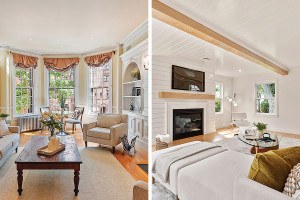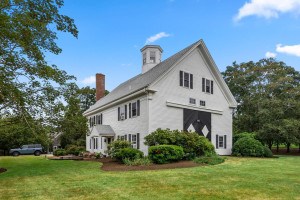Four Places to Find Henry Cobb’s Iconic Buildings in Boston
From the Hancock Tower to One Dalton, the Boston native, who passed away Monday, never stopped shaping the city's skyline.
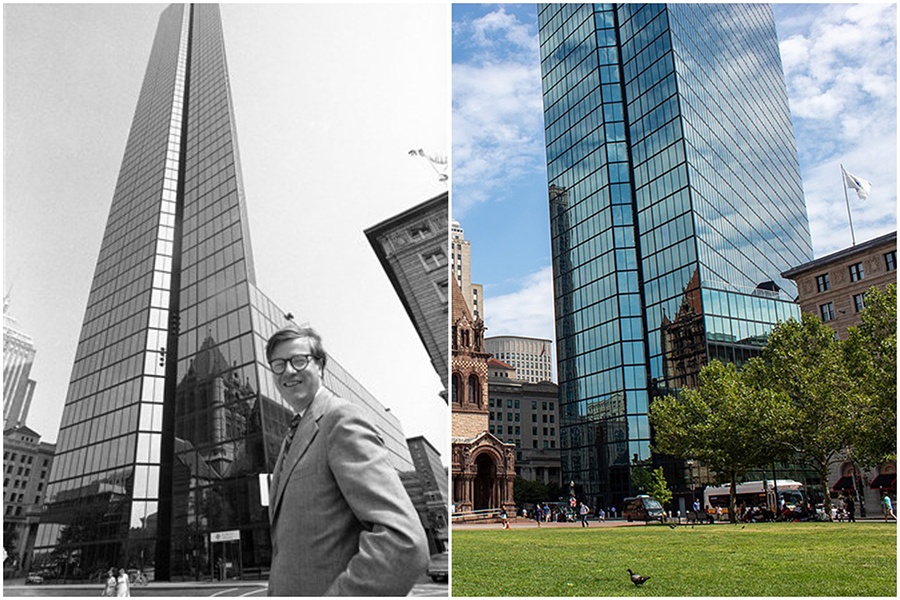
Photo via AP Images | Photo via Wikimedia Commons
To stare into the massive mirror of the Hancock Tower (ok, 200 Clarendon) and see the Gothic beauty of Trinity Church reflected back at you is a defining Boston moment. Since it first rose from the ground in 1976 to become Boston’s tallest tower, 200 Clarendon has been an icon on the city skyline. And we have architect Henry Cobb, who passed away on Monday at age 93, to thank for that. As Rachel Slade, also a Boston contributor, put it in the Boston Globe, “Henry Cobb may be the most accomplished Boston-born modern architect.” Known as Harry to close friends, Cobb was born in Boston and studied at Harvard before leaving his hometown for New York, where he joined architectural forces with modernist designer and fellow architectural titan I.M. Pei, who died in May of last year.
It’s impossible to live in Boston without witnessing Cobb’s impact. “Harry Cobb was a great architect who had enormous influence on the skyline of Boston with two towers separated by decades—the John Hancock Tower and One Dalton—both with a clarity, gracefulness, and simplicity which will endure,” says David Manfredi, CEO and founding principal at prominent Boston firm Elkus Manfredi Architects.
Indeed, says Ian Taberner, a director at Boston Architectural College and a one-time employee of Pei Cobb Freed & Partners, “It is difficult to contemplate a modern architect who has contributed as much to the city he called home than Henry. N. Cobb.” And he says his work is as much a part of the city as its sidewalks. “From the BAC we can see two of his works—the John Hancock Tower and One Dalton Place. With a walk we can see the Moakley U.S. Courthouse and experience the city and urban planning for Boston City Hall and the Christian Science Center. With a drive we can visit the Portland Museum of Art.”
Mark Pasnik, a principal at South End-based OverUnder, cites the Hancock Tower as one of Cobb’s great works. “The Hancock Tower flashes with melancholic skies and dramatic sunsets, but the architecture is always somewhat stoic, like a compassionate sentinel standing guard over our hometown,” he says. “I see it every day as I walk out my door and every day as I return home. It never ceases to fascinate me. Yesterday, when Harry’s daughter told me that her father had passed away, I instinctively marched to the foot of the tower, wrapped myself in the dark void of the angled slice along its south facade, and thought of my friend and mentor.”
Pasnik spent two years with Cobb, editing his first and only book, Henry Cobb: Words & Works 1948-2018: Scenes from a Life in Architecture, which he describes as “looking back on a 70-year career that even now hasn’t stopped shaping cities across the world.” He says Cobb never considered himself to be innately talented. “Harry was one of the most deeply intelligent, self-critical, and humble people I have met. How lucky are we to have this very Bostonian figure’s most elegant work of poetry standing in our midst,” he says.
In light of Cobb’s recent passing, here’s a brief look at the skyline he helped make soar.

Photo via Wikimedia Commons
Harbor Towers
Love them or love to hate them, you can always pick the Harbor Towers out on a postcard. The two waterfront towers, slightly staggered at different heights, were built in 1971, five years before the invention of the Hancock Tower. The two Brutalist beacons are just a half mile from probably the city’s most famously concrete structure: City Hall Plaza, which itself was born from a master plan devised by Cobb and Pei.
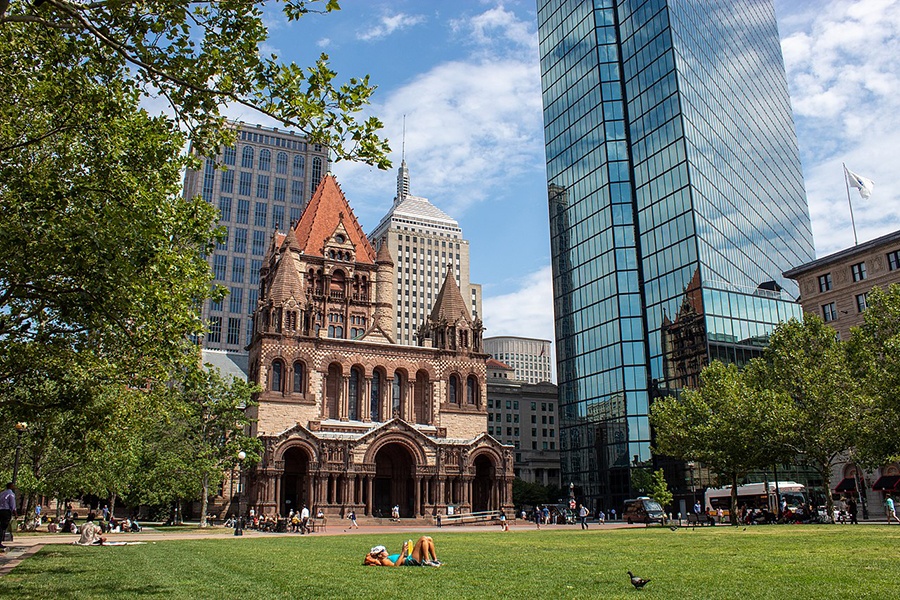
Photo via Wikimedia Commons
200 Clarendon
At 790 feet, this glass beacon claims the title of not only the tallest building in Boston, but in all of New England. The Copley Square landmark is a minimalist feat, and it’s one of Boston’s best buildings not just because it’s an ever-present North Star as we wander around, but because its mirrored facade reflects the city all around us.

Photo via Wikimedia Commons
John Joseph Moakley United States Courthouse
Completed in 1999, this 11-story edifice (10 above ground and one below) sits at the edge of Fan Pier, embracing the harbor with its curved glass wall. Inside the water-struck brick building are 765,000 square feet of courtrooms, chambers, and offices belonging to the United States Court of Appeals for the First Circuit and the United States District Court for the District of Massachusetts.
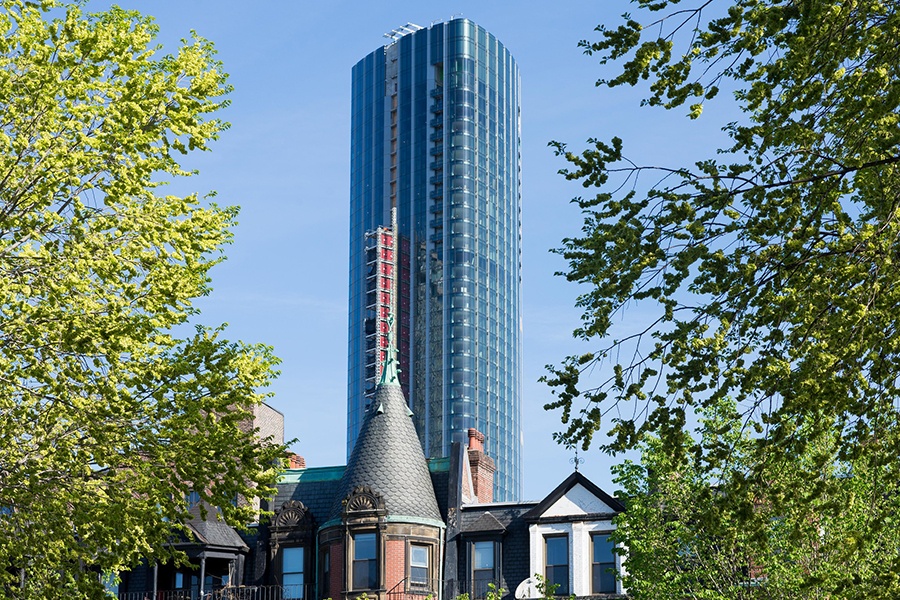
Photo by massmatt via Flickr/Creative Commons
One Dalton
The newest Cobb addition to the horizon and the tallest residential tower in New England, the soft triangular form of the all-glass One Dalton ascends 61 stories out of a petite parcel and into the skyline. With Four Seasons-managed penthouses going for upwards of $30 million, the view from the top is pretty close to priceless.
